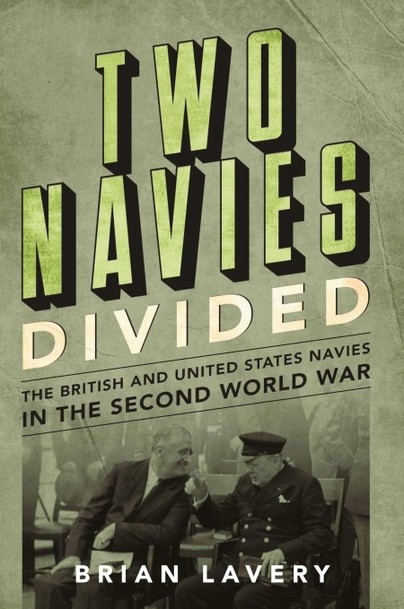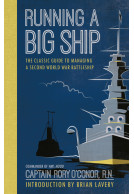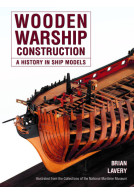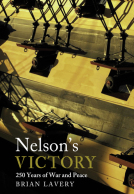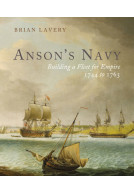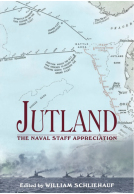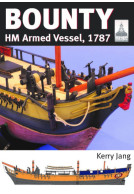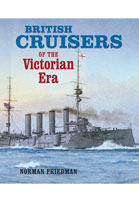Two Navies Divided (Hardback)
The British and United States Navies in the Second World War
(click here for international delivery rates)
Need a currency converter? Check XE.com for live rates
| Other formats available | Price |
|---|---|
| Two Navies Divided eBook (36.3 MB) Add to Basket | £16.99 |
The title is derived from George Bernard Shaw’s comment that ‘England and America are two countries divided by a common language.’ It is not intended to imply that the two navies were seriously at odds with one another, but rather to suggest, as in the case of language, that common roots and usages varied significantly. And the Second World War is a pertinent moment for comparison. They fought on the same side against a common enemy for nearly four years, but Britain fought the war for the survival of itself and its empire, though in the long term it failed with the latter, while the American government fought to maintain its influence through the balance of power; its people fought for revenge for Pearl Harbor, and out of a sense of justice.
In this new book, Brian Lavery describes and analyses the differences and similarities between the two navies and in doing so sheds fascinating light on how the naval war was fought. For example, both navies had spectacular failures after entering the war – the Royal Navy off Norway, the USN at Pearl Harbor and Savo Island. Paradoxically, both commenced the war with quite amateur performances by professional navies and ended with highly skilled performances by largely amateur manned forces. The training systems for regular officers had flaws in both countries. In Britain, entry was largely dependent on family income, in America, on political influence. But American officers probably had a broader perspective by the time they entered active service. The book covers ships and weapons systems – for instance, the British used too many gun types in the 4 to 6in range, while the Americans concentrated on the well-designed 5in. And the author describes conditions onboard ships. British vessels were awash with alcohol, which had its attractions for Americans when alongside; the Americans offered ice cream in return.
These examples represent only a tiny proportion of the subjects covered in this stimulating analysis. Aviation, the marines of both navies, anti-submarine and mine warfare, uniforms, propulsion systems, shipbuilding and building programmes, commanders and national leaders, ratings and officers, ship design, geographical environments, naval bases, hammocks and bunks, the deployment of women – these are among the myriad big and small themes that will open the eyes of naval historians and enthusiasts, and show anyone with an interest in the Second World War how these two great allies came together to defeat the Axis forces.
"In sum, Two Navies Divided is a huge and overarching review of the Royal and United States Navies in the Second World War. It explores the whole range of naval warfare from ship design to their roles in all the theatres of war. It is above all an absorbing and pleasurable read."
The Mariners Mirror
"This is an impressively researched book...well-written and very readable..."
The Naval Review
"This very long book is a welcome addition to the array of naval histories of World War II. It has to be long to adequately address its topic: a comparison and contrast of the U.S and U.K navies in World War II and how — despite their common origin and similarities and differences — together they combined to defeat the Axis navies. The author’s chapters logically sequence through topics, starting with culture, then personnel, bases and logistics, ships, weapons, intelligence and electronics, the battle fleets, aviation, submarines, anti-submarine warfare, amphibious warfare, marines, coastal warfare, allies and enemies. The narrative is not only descriptive but includes first-person accounts to illustrate the human element that affects every aspect of war. The author pulls no punches in presenting the failures as well as the successes and the different approaches of each navy in waging war on a global scale."
Seapower Magazine
"In conclusion, it is easy to to challenge some of the author’s assertions in a book covering such a wide field – he has undertaken a mammoth task and produced a rewarding read which will no doubt provoke debate among those interested. Recommended."
South West Soundings, South West Maritime History Society
"...Two Navies Divided is a most comprehensive compendium of the Royal and United States Navies in World War Two. In covering the whole range of naval warfare and the navies’ organisations and operations, Lavery provides a valuable addition to the naval history lexicon...it is an absorbing read."
Australian Naval Institute
Read the full review here.
'It is a tour de force and no aspect of the organisation of these vast services is overlooked. A must for naval historians and laymen alike it is packed with fascinating facts and insights. … The author should be proud of an amazingly researched, detailed yet readable book which gives context to any number of issues relating to the two largest navies the world has ever seen.'
Admiral Lord West of Spithead
About Brian Lavery
BRIAN LAVERY is the bestselling author of more than thirty books on maritime history including the highly successful Nelson’s Navy and Empire of the Seas. He was for many years senior curator at the National Maritime Museum at Greenwich, and he served on the advisory committee that dealt with the most famous preserved ship in the world, HMS Victory. His recent title, Anson's Navy, has just been published by Seaforth.







